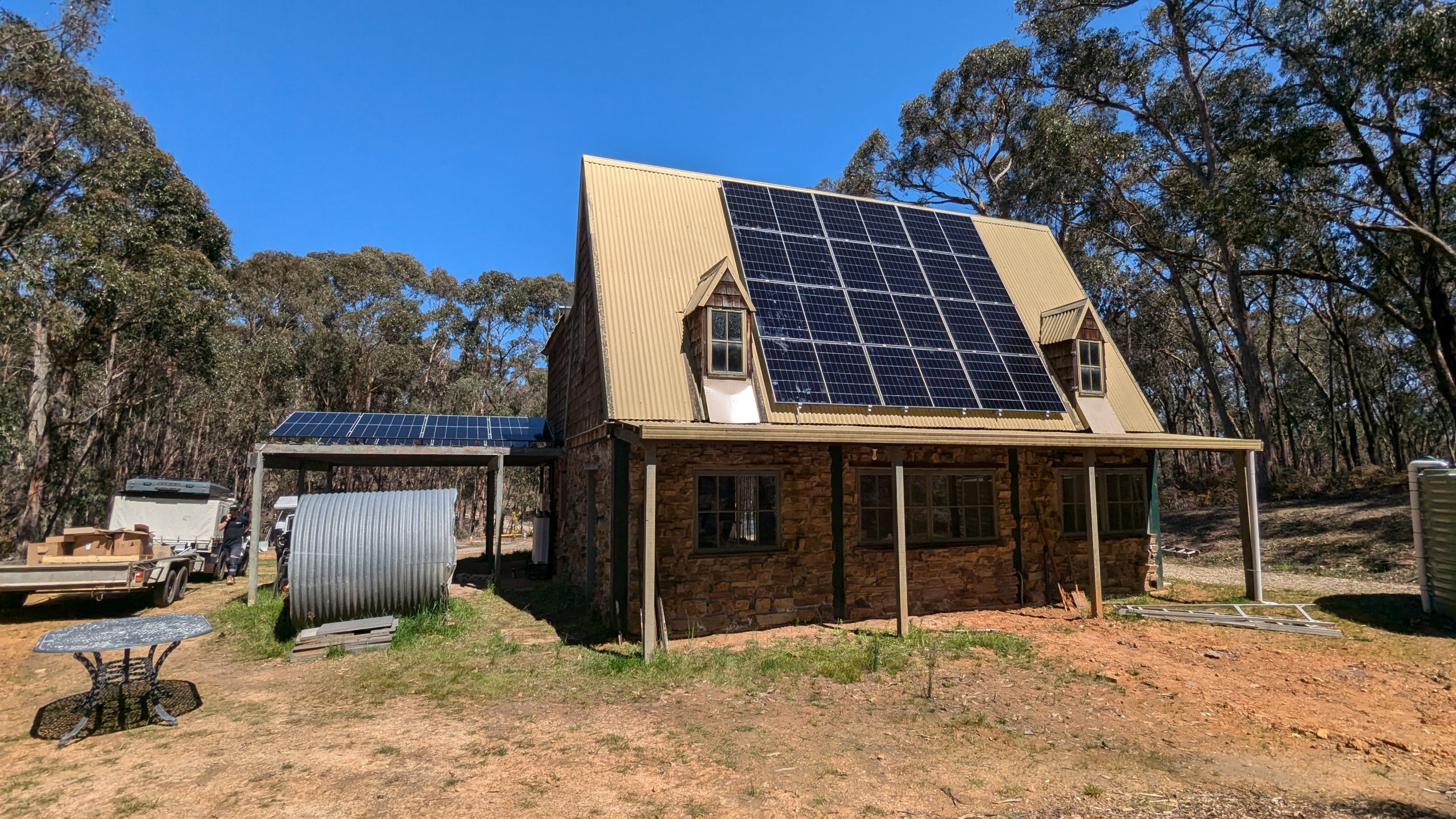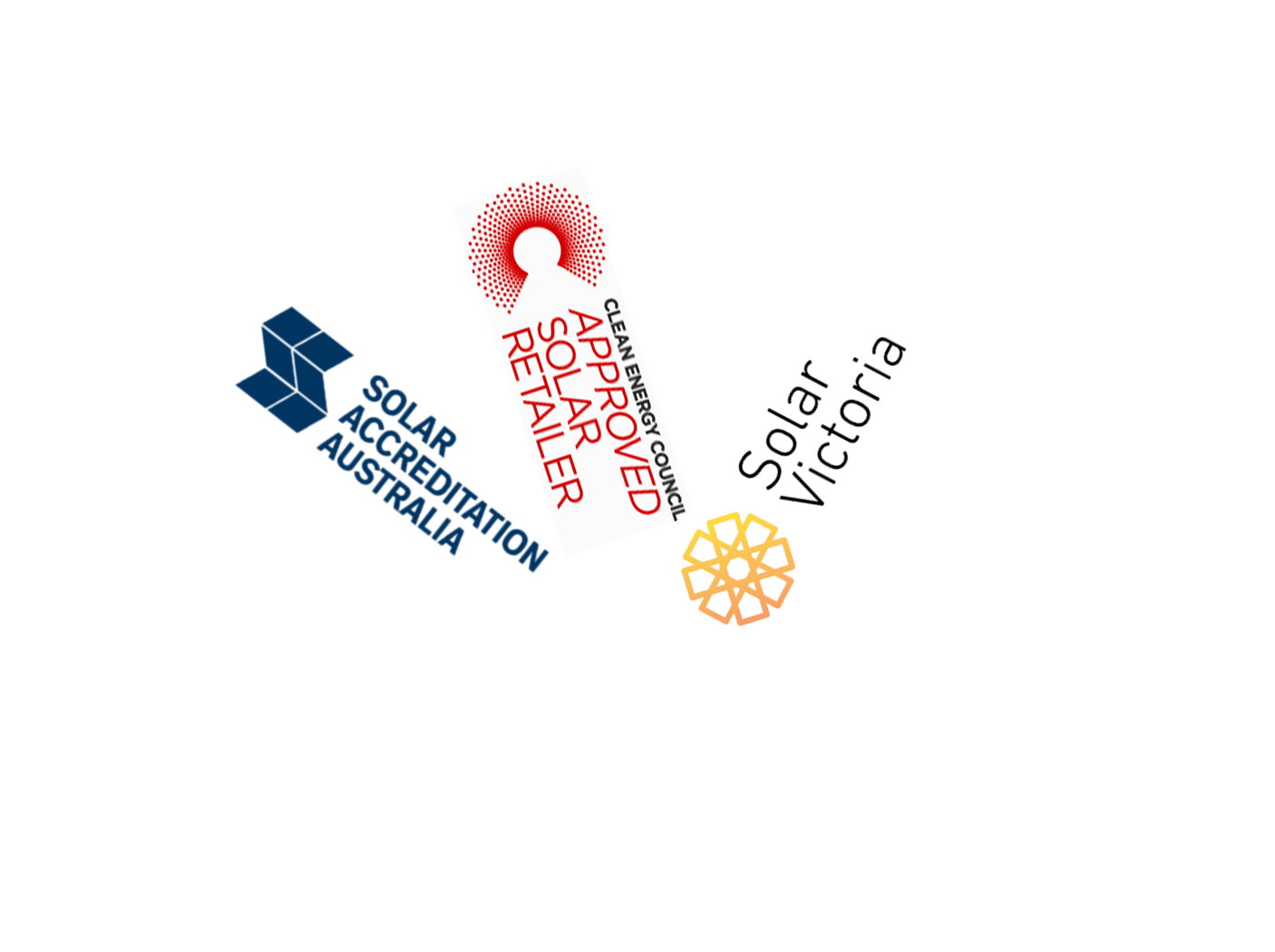
Sungrow
- Sungrow, a global inverter and battery solutions manufacturer, is frequently chosen for Victorian off-grid and hybrid installations. Its SBR Battery Series (SBR064–256) provides modular LiFePO4 storage capacities from about 6.4 kWh to 25.6 kWh. The high-voltage design ensures efficient operation and is complemented by built-in battery management and IP55-rated enclosures, allowing reliable operation in varied conditions.
- The SH8.0/10RS Hybrid Inverter, a single-phase system in 8 kW or 10 kW variants, pairs seamlessly with the SBR batteries and supports backup power, multiple MPPT inputs, and remote monitoring through Ethernet or Wi-Fi. Both products comply with Australian standards and can integrate into virtual power plant programs.
Alpha ESS
- Alpha ESS systems are well-established in Victoria, offering turnkey residential storage solutions that combine high-voltage lithium batteries, hybrid inverters, and intelligent energy management. The SMILE S6 HV 6 kW system typically starts around 7.2 kWh and can be expanded. It delivers efficient self-consumption, backup capabilities, and time-of-use optimization.
- Alpha’s cloud-based monitoring platform provides real-time performance insights, enabling users to track energy usage and optimize their setups.
Sigenergy
- Sigenergy’s SigenStor products serve residential and small commercial environments in Victoria. These integrated solutions merge a lithium-ion battery with a hybrid inverter, often ranging from 5 kWh to 20 kWh total capacity. By unifying storage and inversion in a single system, installation complexity is reduced and maintenance is simpler.
- Remote management tools, accessed through a dedicated app, empower homeowners to manage load priorities and maintain reliable backup during outages.
Deye
- Deye hybrid inverters are widely employed in Victorian off-grid systems for their cost-effectiveness and versatility. The GB-SL Series, spanning 3–10 kW, accommodates multiple MPPT connections and a variety of lithium battery options.
- These inverters operate efficiently in off-grid scenarios, comply with local standards, and communicate over CAN, RS485, or Wi-Fi. Their affordability and adaptability make them a practical choice for balancing performance and budget.
Pylontech
- Pylontech’s Force H3X Hybrid system integrates a hybrid inverter and modular LiFePO4 battery modules, starting around 10 kWh and expandable as needed. Its all-in-one approach eliminates the need for a separate inverter, simplifying the overall system design.
- With a long cycle life, robust safety features, and straightforward installation, the H3X Hybrid solution provides reliable on-grid and off-grid functionality, meeting a range of energy storage needs in Victoria.
Victron Energy
- Victron Energy products have earned a strong following in Victoria, particularly for off-grid and remote installations. Their ecosystem includes inverter-chargers like MultiPlus and Quattro, along with MPPT solar controllers and monitoring devices.
- This modular approach allows for complex, custom-tailored configurations that can integrate various battery chemistries. The VRM portal supports detailed remote monitoring and management, ensuring robust performance and adaptability for challenging scenarios.
Selectronic
- Selectronic’s SP PRO Inverter Series is respected in Victoria for its durability and flexibility in harsh or isolated conditions. These inverter-chargers, starting from around 3 kW, can integrate multiple energy sources and backup generators.
- The comprehensive SP LINK software provides extensive configuration options, allowing installers to fine-tune system performance. Local support, compliance with Australian standards, and a reputation for longevity make Selectronic a premium choice for demanding off-grid installations.
Common Complaints and User Feedback on Popular Off-Grid Solar Equipment in Victoria
Sungrow
Common concerns focus on occasional firmware update difficulties and intermittent connectivity issues for remote monitoring. Some users find the monitoring portal less intuitive than desired, and while the SBR batteries and SH series inverters are considered reliable, a few mention delays in obtaining high-level technical support. Feedback is often found in community forums and review platforms, such as user discussions on the Whirlpool Forums – Green Tech Section and installer feedback at SolarQuotes Reviews.
Alpha ESS
Generally user-friendly, but some complain about slow responses in the monitoring app and delays in support for complex troubleshooting. Certain firmware updates took additional time to stabilize performance after initial setup. Similar comments appear on ProductReview.com.au and user forums on Clean Energy Reviews.
Sigenergy
Less established, with feedback often highlighting concerns about long-term support and spare parts availability. The integrated app may feel basic, offering limited customization. These reservations are shared on Facebook groups, community pages, and the Whirlpool Forums where experiences with newer brands are frequently discussed.
Deye
Complaints center on slower technical support and occasional difficulty in initial configuration or firmware updates. Deye inverters are considered good value but not as user-friendly as premium brands. Insights into these issues appear in comment sections on Clean Energy Reviews and on Whirlpool where installers often compare different inverter brands.
Pylontech (Force H3X Hybrid)
While Pylontech batteries enjoy a positive reputation, some users of the Force H3X Hybrid system have noted limited end-user configurability and occasional communication hiccups requiring firmware updates. Local support responsiveness can vary. Such feedback can be found on SolarQuotes Reviews and within Australian-focused solar equipment Facebook groups.
Victron Energy
Known for quality and flexibility, but criticized for a steep learning curve and complexity in configuration. Some users struggle to optimize the system without professional assistance. Although global support and online communities are robust, immediate personalized help can be challenging to access. User experiences and advice on these points appear on Whirlpool Forums and in discussions at Clean Energy Reviews.
Selectronic
Often praised for reliability in demanding conditions, but complaints revolve around premium costs and advanced programming requirements for SP PRO inverters. Technical support is solid, yet fine-tuning settings can be time-consuming. Delays in obtaining certain spare parts or upgrades occasionally occur. Users share these experiences in community feedback on SolarQuotes Reviews and various Australian installer forums.
User Feedback and Complaint Sources
- Whirlpool Forums – Green Tech Section
- SolarQuotes Reviews
- ProductReview.com.au – Solar & Energy Storage
- Clean Energy Reviews
- Various brand-specific Facebook groups and community forums
Solar Panels: Comparing Aiko, Trina, LONGi, REC, and Jinko
These sources contain user-generated content and individual opinions, which may not represent general product performance. It is advisable to review multiple references, verify the credibility of any claims, and seek professional advice when evaluating off-grid solar equipment options in Victoria.
Selecting the right solar panels involves looking beyond just the efficiency rating. Factors like cell technology, build quality, degradation rates, and warranty coverage play a crucial role in ensuring long-term, reliable power production. The following five manufacturers are renowned globally for their cutting-edge technologies and rigorous quality standards, resulting in panels capable of maintaining strong output even in variable climates.
Aiko Solar stands out for its deep focus on cell-level innovation. By pioneering advanced PERC and half-cell designs, Aiko aims to enhance both efficiency and reliability. Their approach revolves around pushing the technological envelope at the cell stage to deliver panels that perform consistently over time.
Trina Solar is known for its Vertex series and large-format modules. By using 210 mm wafers and high-density interconnects, Trina’s panels deliver higher wattage outputs. With robust certifications and field-proven durability, they appeal to both residential and commercial users seeking maximum power from a compact array.
LONGi Solar has built its reputation on monocrystalline wafer leadership. LONGi panels feature high conversion efficiencies, low degradation rates, and strong warranties. Known for extensive R&D, they consistently rank among top performers in reliability tests and provide stable yields year after year.
REC Group emphasizes longevity and premium construction. Their panels, such as the REC Alpha and N-Peak series, combine advanced cell architecture with strong mechanical integrity and strict quality control. Their comprehensive warranties and track record for reliability have made REC a go-to choice for those prioritizing peace of mind and consistent output.
JinkoSolar has rapidly gained market share through continual innovation in N-type cells, half-cut designs, and bifacial modules. Jinko’s Tiger series and Tiger Neo line offer high power density, excellent low-light performance, and strong warranties. These panels are engineered to maintain steady production, even in less-than-ideal conditions.
Below is a comparative table summarizing key features and offerings from these brands, helping you make an informed decision based on technology, efficiency, durability, and warranty terms.
Feature Comparison Table
| Brand | Cell Technology | Key Panel Series | Efficiency Range* | Notable Features | Warranty (Product/Performance)** | Origin & Reputation |
|---|---|---|---|---|---|---|
| Aiko Solar | Advanced PERC, Half-Cell | Aiko PERC Modules | ~20–22% | High-quality cell-level R&D, stable output | ~12-15 yrs product / 25+ yrs performance | Known for cell innovation, pushing advanced cell tech |
| Trina Solar | Monocrystalline, Multi-Busbar, Half-Cell | Vertex Series (210 mm wafers) | ~20–22.5% | Large format modules, high-density interconnect, global certifications | ~12-15 yrs product / 25-30 yrs performance | Global leader with broad presence, strong R&D and durability |
| LONGi Solar | Monocrystalline (M10 wafers), PERC & Bifacial | Hi-MO Series | ~20–22.5% | Industry-leading wafer tech, low degradation, stable yields | ~12-15 yrs product / 25-30 yrs performance | Market leader in mono wafers, high reliability record |
| REC Group | Heterojunction, N-type, Half-Cell | REC Alpha, N-Peak | ~20–22% | Premium build quality, low degradation, rigorous QC | ~20-25 yrs product / 25-25+ yrs performance | European brand known for stringent standards and robust warranties |
| JinkoSolar | N-type, PERC, Bifacial, Half-Cell | Tiger, Tiger Neo | ~20–23% | High power density, excellent low-light performance, top-tier innovation | ~12-15 yrs product / 25-30 yrs performance | Rapidly growing global player, innovative cell designs |
*Efficiency ranges are approximate based on public data and top-tier models available at the time of review.
**Warranty terms vary by product line; always check the latest datasheets and warranty documents from the manufacturer.
When choosing solar panels, consider not only the headline efficiency but also the long-term reliability and warranty support. Aiko’s cell-first approach, Trina’s high-output modules, LONGi’s robust mono technology, REC’s premium craftsmanship, and Jinko’s cutting-edge N-type designs each offer distinct advantages. By comparing these features and evaluating performance claims against your specific conditions and energy goals, you can confidently select a solar panel brand that will deliver sustainable, cost-effective power for years to come.
Read more



